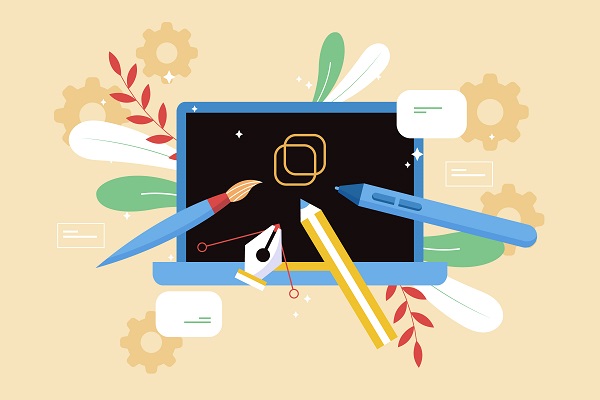Trends in Image Design

As you navigate the ever-evolving realm of image design, it's essential to stay attuned to the subtle shifts and overarching patterns shaping visual communication today. From the fusion of artificial intelligence with creative expression to the resurgence of classic influences in modern design, there's a tapestry of trends waiting to be explored.
As you ponder the implications of these emerging directions, you might find yourself intrigued by the intricate interplay between tradition and innovation in the dynamic landscape of graphic design. Let’s dive deep…
Emerging AI Integration in Image Design
Integrating AI technology into image design processes can enhance creativity and efficiency. Tools like Adobe Sensei and Venngage's Infographic Generator are at the forefront of this revolution in the industry. These tools use machine learning algorithms to improve creative elements in images, resulting in a polished and professional look.
Heatmapping technology is also being utilized to add depth and dimension to images, creating a more immersive viewing experience. Additionally, the incorporation of 3D elements in image designs can enhance visual appeal, making them more engaging and dynamic.
For amazing free images, check out PNGimages.com.
Innovative Artistic Trends and Inspirations
Exploring innovative artistic trends in graphic design reveals a diverse range of creative influences shaping modern visual compositions. Retro pixel art is seeing a resurgence, appealing to nostalgia and offering a unique visual appeal.
Experimental typography is pushing boundaries with unconventional lines and animations, creating dynamic and engaging designs. Abstract gradients and colors are adding depth and creativity to contemporary artworks, while sustainability themes reflect an increasing environmental awareness.
Nature-inspired textures are incorporating organic elements into digital creations, fostering connections with viewers. Vibrant neon hues, funky patterns, and retro stripes are making bold statements in design, alongside high-contrast color palettes and vintage color schemes.
The integration of AI technology is revolutionizing the artistic landscape, leading to innovative advancements in graphic design.
Diverse Visual Inclusivity in Design
The trend towards Diverse Visual Inclusivity in Design showcases a dedication to representing a range of identities and viewpoints in contemporary graphic compositions. Inclusive visuals aim to create a sense of belonging and connection with viewers through the portrayal of diverse identities.
Designers prioritize accessible color palettes and clear typography to ensure readability and inclusivity for all audiences. Additionally, the incorporation of sustainability messaging in designs reflects a growing recognition of environmental concerns.
Maximalism and Bold Graphic Elements
Explore the world of maximalism in graphic design, where intricate patterns and vivid colors collide to create visually striking designs. Maximalist designs often feature detailed elements that draw the eye into a rich tapestry of visuals, bold colors that command attention, and high contrast pairings that challenge minimalist aesthetics.
Specific Design Trends and Examples
Exploring specific design trends and examples in the graphic design industry reveals a variety of approaches and strategies used by brands to differentiate themselves.
For instance, Oatly and Ben & Jerry's have adopted distinctive typography in their branding to enhance recognition.
Spotify's Wrapped campaign utilizes personalized graphics resembling digital scrapbooks to engage users effectively.
Kiehl's packaging showcases a blend of retro and modern design elements, creating a unique visual identity.
Brands like Yves Rocher and Gucci are incorporating nature-inspired aesthetics in their designs to align with environmental themes.
Retro aesthetics in marketing campaigns aim to evoke nostalgia and establish emotional connections with audiences.
These design trends demonstrate the importance of creating a unique brand identity and connecting with consumers on a deeper level through design.
Conclusion
In conclusion, as you navigate the ever-evolving landscape of image design trends, remember to embrace the fusion of AI technology, artistic inspirations, visual inclusivity, and maximalist elements.
Stay open to experimenting with new styles and techniques to create visually captivating compositions that connect with audiences on a deeper level.
By staying informed and adaptable, you can harness the power of design trends to elevate your work and make a lasting impact in the creative industry.